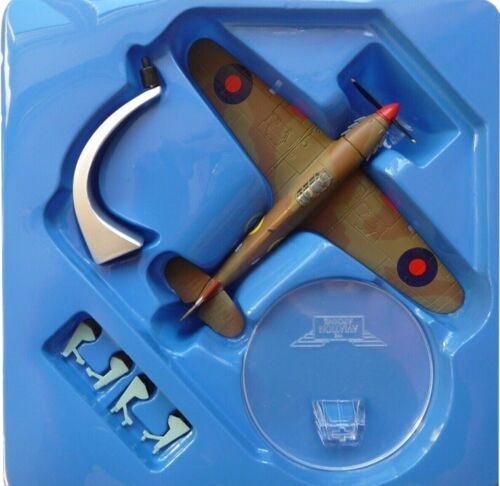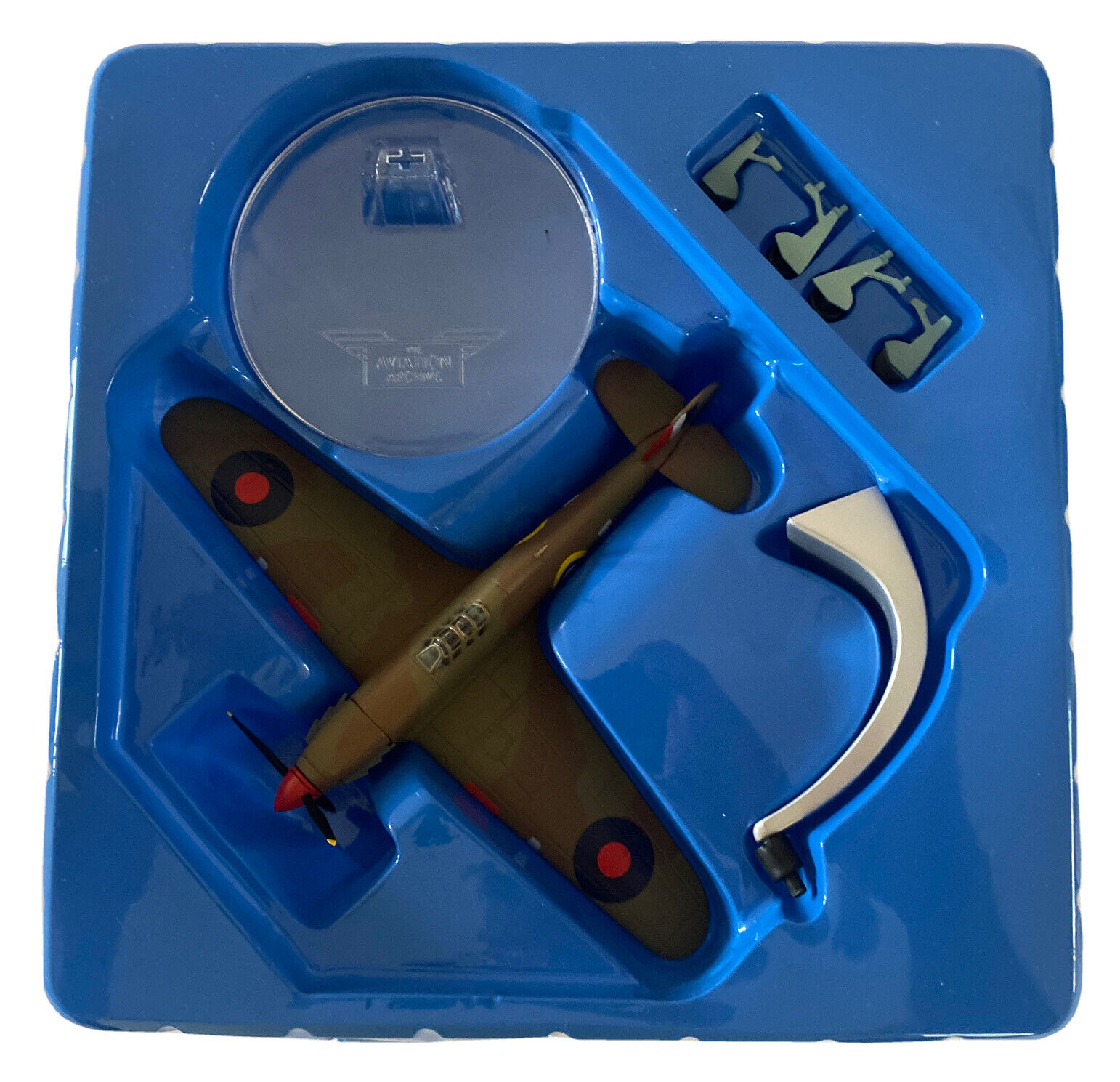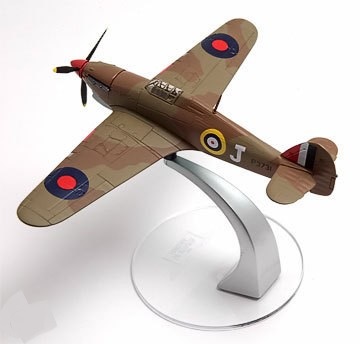Hawker Hurricane Mk 1 (Trop) – 261 Sqn RAF, Frederick Robertson, Malta 1941
Add to compare2 in stock
£35.00 £44.99
2 in stock
Corgi Aviation Archive 1/72 scale 49103: Hawker Hurricane mk1 (Tropical) P3731/J 0f 261 Squadron RAF, as flown by Ace Frederick Neal Robertson during the intense air battles over Malta. Mint and boxed, highly accurate 1/72 scale limited edition. One of the fantastic and desirable “Flying Aces” series released by Corgi in 2000. Has to be seen to be appreciated and very hard to find.
Length 5.25 inches Wingspan 6.75 inches
Frederick Neal Robertson of Lockerly, Hampshire was born on 25th July 1918 in Romsey, Hampshire and joined the RAFVR about September 1937 as an Airman u/t Pilot. Called to full-time service on 2nd September 1939, he was then posted on loan to 769 (FAA) Squadron at Donibristle, where he flew Gladiators and Swordfishes and practiced carrier landings on HMS Furious. In October 1939 Robertson was posted to 66 Squadron at Duxford. Over Dunkirk on 2nd June 1940 he destroyed a Ju88. Immediately afterwards his Spitfire was hit by flak, making it uncontrollable. Robertson baled out and landed on a beach five miles west of Dunkirk. He managed to get on one of the last boats to leave. Robertson shared in destroying a Do17 on 10th July. He was posted away on 18th July 1940 to join a group of pilots at Uxbridge. They were flown to Hullavington, picked up Hurricanes, flew them to Abbotsinch and there embarked in the carrier HMS Argus, where they were joined by four more officers. They were told their destination was Malta and they were now 418 Flight. The Argus sailed on 23rd July, arrived at Gibraltar and sailed for Malta on 31st July. At dawn on 2nd August they flew off to Luqa. On the 16th 418 Flight combined with the Malta Fighter Flight becoming 261 Squadron. Robertson damaged a CR42 on the 20th, probably destroyed a Me200 on 25th September, damaged a Me200 on 4th October, damaged a CR42 on 23rd November, destroyed a SM79 on the 28th, destroyed a SM79 at night on 18th December, destroyed a Ju87, a CR42 and probably two others on 19th January 1941, destroyed a CR42 and damaged a SM79 on 1st February and destroyed a Ju88 on the 4th. During the night of 8th/9th February 1941 Robertson damaged a Ju88, on the 25th damaged a Do17, on 5th March destroyed a Ju88 and a Me109. On the 16th he damaged a Me110 and on the 23rd he destroyed two Ju87s. In this engagement he was hit by return fire and his Hurricane, V7495, was set alight. Robertson baled out and landed in a field near Luqa.
He was awarded the DFM (gazetted 18th March 1941). Robertson was rested at the end of April 1941 and returned to the UK via Cairo. He instructed at 60 OTU and 54 OTU. Commissioned in March 1942, he was posted to 219 Squadron at Tangmere. Robertson later served with 153 Squadron at Portreath. In April 1943 he joined 96 Squadron at Honiley.
He was killed on 31st August 1943 as a Flying Officer with 96 Squadron. His Beaufighter VI V8715 collided with a B-17 of the USAAF and crashed near Church Farm, Foulsham. His observer, Sgt.BE Dye, also a Battle veteran, was killed too.
The Hawker Hurricane is a British single-seat fighter aircraft that was designed and predominantly built by Hawker Aircraft Ltd for the Royal Air Force (RAF). Although largely overshadowed by the Supermarine Spitfire, the aircraft became renowned during the Battle of Britain, accounting for 60% of the RAF’s air victories in the battle, and served in all the major theatres of the Second World War.
The Hurricane was developed by Hawker in response to the Air Ministry specification F.36/34 (modified by F.5/34) for a fighter aircraft built around the new Rolls-Royce engine, then only known as the PV-12, later to become famous as the Merlin. At that time, RAF Fighter Command comprised just 13 squadrons, each equipped with either the Hawker Fury, Hawker Hart variant, or Bristol Bulldog – all biplanes with fixed-pitch wooden propellers and non-retractable undercarriages. The design, started in early 1934, was the work of Sydney Camm. The design evolved through several versions and adaptations, resulting in a series of aircraft which acted as interceptor-fighters, fighter-bombers (also called “Hurribombers”), and ground support aircraft. Further versions known as the Sea Hurricane had modifications which enabled operation from ships. Some were converted as catapult-launched convoy escorts, known as “Hurricats”. More than 14,000 Hurricanes were built by the end of 1944 (including about 1,200 converted to Sea Hurricanes and some 1,400 built in Canada by the Canada Car and Foundry).
| Weight | 0.7 kg |
|---|







